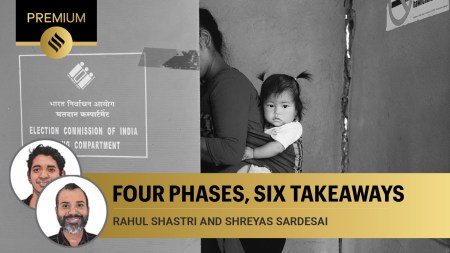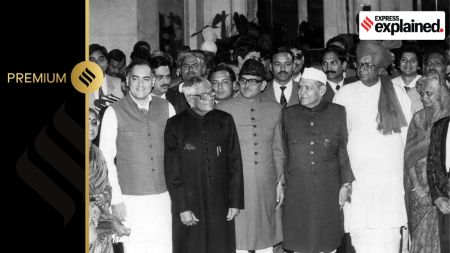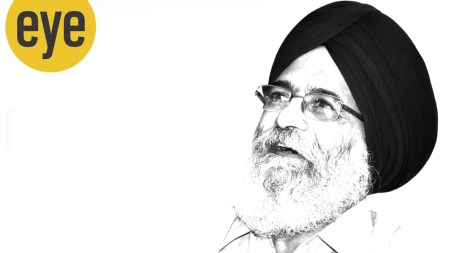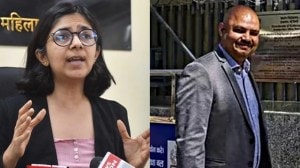- India
- International
Why Mayawati walks alone
Behind BSP chief's refusal to enter an alliance to fight Lok Sabha election is the instinct of self-preservation, and preparation for a future bout of Dalit assertion
 Following the 2022 assembly election, the SP has made considerable efforts to increase its share of Dalit votes, leading to increased bitterness between Akhilesh Yadav and Mayawati. (C R Sasikumar)
Following the 2022 assembly election, the SP has made considerable efforts to increase its share of Dalit votes, leading to increased bitterness between Akhilesh Yadav and Mayawati. (C R Sasikumar)At a press conference on January 15 — her birthday — Mayawati made it clear that the BSP would not align with any party or alliance, including INDIA, and would fight the 2024 Lok Sabha election alone in UP. This has led observers to argue that a three-cornered contest in UP would benefit the BJP, and, aware of this, Mayawati has decided to help the BJP.
However, Mayawati is a master strategist and it is necessary to understand the reasons underlying her decision. Two factors seem to be driving it: Like many observers, she feels that the BJP will return to power under Narendra Modi in 2024 as the INDIA alliance is facing problems within its own ranks. Second, given this calculation and the weakened position of her party, she feels that if she joins the INDIA alliance, the BJP and SP will be able to take away much of her remaining social base, including her core Dalit constituency.
The long-term reason lies in the animosity-ridden rivalry that has driven the relationship between the SP and BSP in UP. Both are “lower-caste” parties with a narrow sectarian base that overlap each other. With the Scheduled Castes (SCs) forming about 20 per cent of the UP population, the BSP has, under Mayawati, attempted to gain the support of sections of the non-Yadav OBCs, together with the Dalits. Similarly, the SP has attempted to unite all sections of backward classes and obtain some Dalit support. The two parties also compete for the support of the Muslim community as well as that of the upper castes. This contestation between the SP and the BSP to widen their social base is visible throughout the 1990s, particularly following the breakdown of the “Bahujan coalition” formed after the 1993 assembly elections. The Guest House incident in 1995 created personal enmity between Mayawati and Mulayam Singh.
The revival of the BJP in the 2000s has sharpened the rivalry between the two parties. Since 2014, the BJP has, over successive national and assembly elections, taken away a large chunk from the BSP and the SP base of the smaller non-Jatav Scheduled Castes and non-Yadav backward castes, respectively. As a result, both are facing decline, but it is the BSP that is facing an existential crisis with its seat/vote share falling in national and assembly elections.
Following the 2017 assembly elections in which the BJP gained a huge majority, fearing a further loss of their base, the two parties decided to bury their differences and join hands to fight three by-polls in 2018. The victory of the SP–BSP alliance by a high margin in March 2018 in the seats vacated by CM Adityanath and Deputy CM Keshav Prasad Maurya in Gorakhpur and Phulpur, and in Kairana in May 2018 in western UP, provided them with a template for a political alliance in the 2019 Lok Sabha elections. But the experiment failed. The core constituencies of the alliance partners supported the alliance, but it could not defeat the new voting bloc built by the BJP of non-Jatav, non-Yadav and non-Muslim voters, a sizeable number across the state. The SP-BSP-RLD alliance won barely 15 seats, despite getting 38.92 per cent vote share; while that of the BJP increased from 42.63 per cent to 49.55 per cent.

The defeat by the BJP sharpened the hostility between them, making them conscious of the need to guard their core constituencies from further depletion by the BJP, but also by each other, in the run-up to the 2022 UP assembly. With the organisational breakdown in the BSP and exodus of its prominent leaders to other parties including the SP, the major battle in 2022 was fought between the BJP and a resurgent SP. Akhilesh Yadav attempted to harness the expansion of Mandal forces to include the smaller OBCs — the Kushwahas, Kurmis, Patels, Nishads and others — who had become politically conscious and demanding. He made efforts to shed the SP’s image of a Muslim-Yadav party by creating an anti-BJP front of smaller OBC and Dalit parties with the RLD in western UP. By positioning himself as the leader of the “pichhde”, he shifted the election discourse into a battle between Hindutva and social justice. This did not help the SP defeat the BJP, but it did make considerable gains in seat and vote share and managed to dent the BJP’s western UP citadel. The BJP’s seats decreased from 312 in 2017 to 255 seats (-52) but it increased its vote-share by 3 per cent. For the first time since 2014, the SP was able to challenge the BJP’s hegemonic position in UP, rendering the election so sharply bipolar that the alliances led by the BJP and SP polled over 80 per cent of the votes and shared 398 of the 403 seats among them.
In contrast, the BSP was the biggest loser among all caste/ sub-caste groupings and Muslims. The BJP made significant gains among the non-Jatavs and an impressive inroad among Jatavs, securing nearly a fifth of their votes, more than double of that obtained in 2017. The SP (including the RLD) increased its vote share among all sections of the Dalit community, though the increase was only slightly more than that of the BJP in the case of the other SC communities, and less than the BJP in the case of Jatavs.
Following the 2022 assembly election, the SP has made considerable efforts to increase its share of Dalit votes, leading to increased bitterness between Akhilesh Yadav and Mayawati. By retaining his assembly seat and giving up his Lok Sabha seat, Akhilesh Yadav signalled that the SP, as the strongest opposition party in UP, was preparing to confront the BJP in 2024. Putting forward the idea of constructing a PDA or “Pichhde (backward classes), Dalit and ‘Alpsankhyak’ (minorities)” alliance, he has consistently held that the SP should be the fulcrum around which the INDIA alliance in UP should be constructed for the 2024 election.
It is against this backdrop that Mayawati’s choice of going alone for the 2024 elections must be understood. For her, it is a matter of survival of the BSP and of the Dalit movement in UP. By not joining the INDIA alliance, she would like to protect her core constituency from further encroachments by the SP and the BJP. Viewed in a larger perspective, the Dalit movement in UP has passed through phases of resurgence and decline with periods of hiatus in which Dalit assertion has continued, giving it a complex nature. The presence of a dominant, upper-caste party, which affords little space for narrower, sectarian formations, is a key reason for the periods of decline. In the early years of Independence, it was the Congress party with its leadership from the upper castes that did not allow room for a Dalit party to grow. Now, it is the BJP, once again an upper-caste party but with a broad spectrum of Hindu social support, that constitutes a strong political force. While recognising all the failures of the BSP’s leadership, it is important to understand that the Dalit movement in UP and in the Hindi heartland, today operates under the shadow of a hegemonic, right-wing Hindu majoritarian party, espousing Hindutva. These factors underlie the decision of Mayawati to bide her time and keep her flock safe for another round of Dalit assertion.
The writer is the author (with Sajjan Kumar) of Maya, Modi, Azad: Dalit Politics in the Time of Hindutva (2023)
EXPRESS OPINION
More Explained
May 17: Latest News
- 01
- 02
- 03
- 04
- 05









































